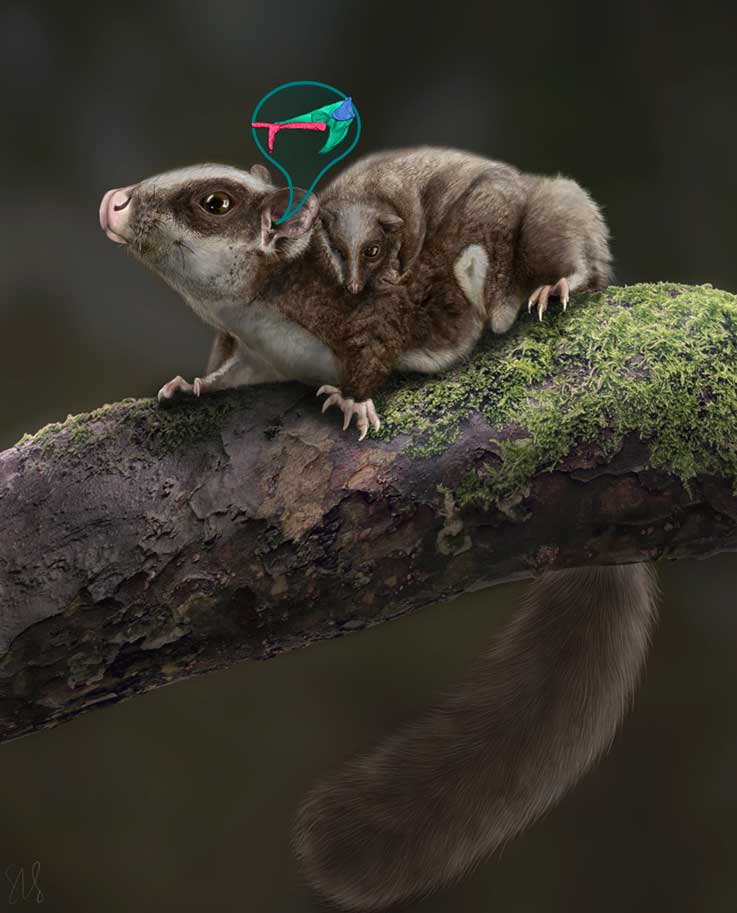Despite increased access to fossils preserving the auditory apparatus, the evolution of the middle ear bones (ossicles) of living mammals has proved elusive to scientists. IUP Biology professor Shundong Bi and John Wible, curator of mammals at the Carnegie Museum of Natural History, describe a new fossil specimen of a haramiyidan from China's Middle Jurassic epoch that represents an evolutionary "stepping stone" between Mesozoic fossils and living mammals. This animal, Vilevolodon diplomylos, was a gliding mammal resembling a southern flying squirrel in size and external appearance.
The study, "A monotreme-like auditory apparatus in a Middle Jurassic haramiyidan," is published in the scientific journal Nature.
Scientists know that the ossicles in extant mammals' close non-mammal relatives were attached to the lower jaw and functioned with it, serving in both chewing and hearing. In many mammal lineages, the ossicles eventually detached from the lower jaw and came to serve only auditory functions. The details of this transition have been mysterious.

Reconstructed Vilevolodon with depiction of ossicles. Illustration by Sarah Shelley
Bi and his colleagues analyzed computed tomographic (CT) images of the new haramiyidan's well-preserved malleus and incus, two of the three middle ear ossicles, and found them remarkably similar to those of modern monotremes (egg-laying mammals). After comparing this fossil with other Mesozoic and extant mammals, the new research demonstrates that the overlapping incudomallear articulation found in this and other Mesozoic fossils, in extant monotremes, and in early ontogeny in extant marsupials and placentals represents an evolutionary stage between fossils with ossicles attached to and functioning with the lower jaw and those where the ossicles are detached from the lower jaw and exclusively function for hearing.
"Perhaps, during detachment of the postdentary bones, the elasticity of the overlapping joint balanced the needs both for increased auditory acuity and for load-bearing through a supporting strut and incudomallear joint with small movement." explained Bi.
"Although separated by 165 million years of geologic time, it is remarkable how similar these bones are in Vilevolodon and the living platypus and echidna," noted Wible. "The preservation of these ossicles in the fossil is amazing; the incus is just a little over a millimeter across!"
The researchers hope the discovery advances the understanding of how mammals, including humans, developed their unique sense of hearing.